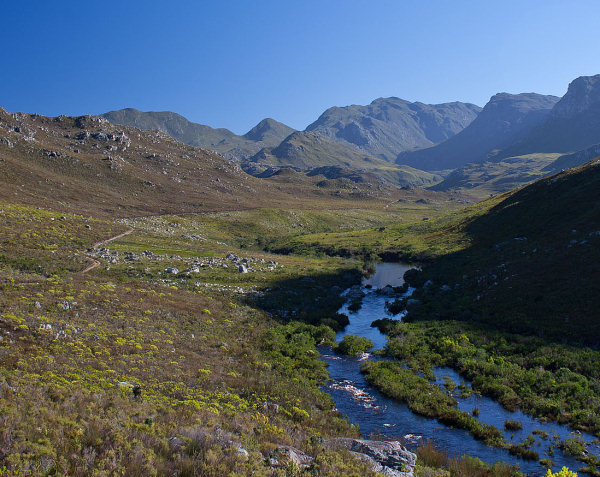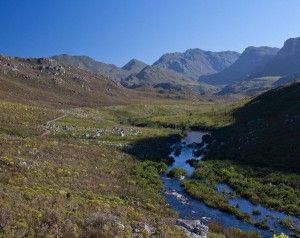Kogelberg is justly called the heart of the Cape Floral Kingdom and boasts around 1 650 plant species, of which 150 are endemic and noteworthy.
The landscape wasn’t suited to farming and for many years Kogelberg was left essentially untouched. The isolation meant that the area was kept free of alien vegetation, which preserved the integrity of the plant life.
The reserve is known for spectacular proteas and has the highest concentration of Mimetes species in the Cape. A type of protea, Mimetes has similar silvery leaves, but has long, brilliant red styles that are tipped with black pollen and look like matchsticks. The endangered Mimetes hottentoticus (or silver pagoda) is found only in Kogelberg.
Few indigenous forests remain along the coast, but Kogelberg is fortunate to preserve three patches of relic forest: Louwsbos, Platbos and Oudebos. Like their cousins at Knysna, these forests have yellowwood, stinkwood and boekenhout trees. On a sweltering summer’s day it is a real treat to escape to their cool shade.
The Kogelberg Trail is a full day 24-km route that passes by all three forests. If you fancy a shorter walk, follow the Leopard’s Gorge Trail from the reserve office to Oudebos.
Location
Kogelberg is situated some 90 km south-east of Cape Town and is sign-posted from the coastal road (R44). The town of Kleinmond is about 8 km south-east of the reserve.
Kogelberg offers the visitor new eco-friendly cabins. Equipped with modern amenities, each cabin has two bedrooms and two bathrooms, plus a spacious lounge, dining and kitchen area.
Bookings open from 3 February 2012 at an introductory offer of R900 for four persons a night. Call 0861-CAPENATURE (0861-227-362-8873) / 021 483 0190 to make your reservation.






